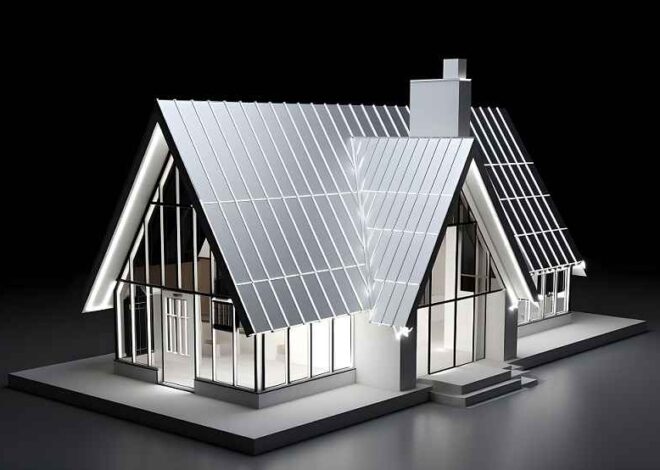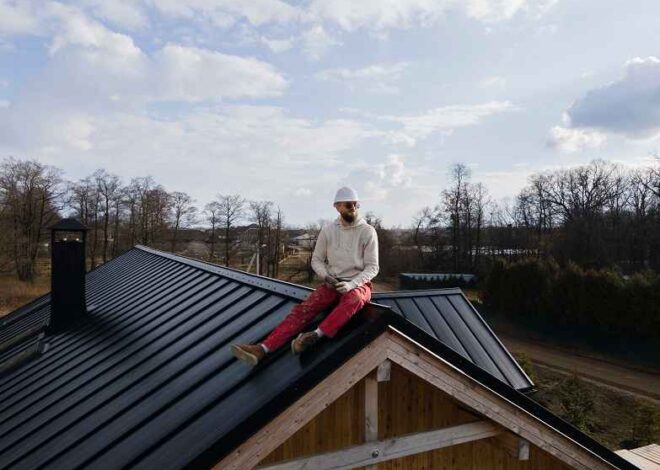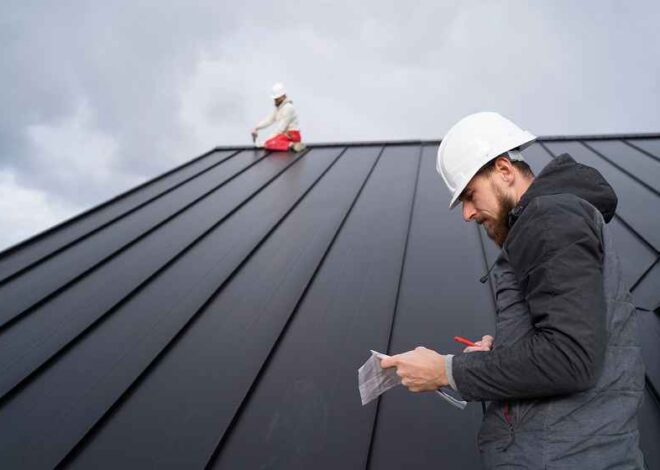
Extending Roof Life: The Benefits of Using Roof Coatings
Your roof is more than just the crowning glory of your home; it’s your first line of defense against nature’s elements. Over time, wear and tear can take its toll, leaving you facing costly repairs or even premature replacement. But what if we told you there’s a simple solution that could extend the life of your roof while enhancing its performance? Enter roof coatings—the unsung heroes in roofing maintenance! In this blog post, we’ll explore how these innovative solutions not only protect but also rejuvenate your rooftop investment. Get ready to discover the myriad benefits of roof coatings and why they deserve a spot on every homeowner’s must-do list!
Introduction to roof coatings
Your roof is your home’s first line of defense against the elements. Over time, exposure to harsh weather and UV rays can take a toll on its integrity. But what if there was an easy way to extend the life of your roof while also saving money? Enter roof coatings—a smart solution that not only protects but enhances your roofing system too. These versatile products have gained popularity among homeowners looking for effective ways to maintain their roofs without costly replacements. Curious about how they work and their many advantages? Let’s dive into the world of roof coatings benefits!
How do roof coatings extend the life of your roof?
Roof coatings act as a protective layer that enhances the durability of your roof. By forming a seamless barrier, they shield against various environmental stressors.
These coatings reflect harmful UV rays, reducing heat absorption and preventing premature deterioration. This reflective quality is critical in extending the life of roofing materials.
Moreover, roof coatings are highly resistant to moisture. They minimize water accumulation and limit the chances of leaks developing over time. This resistance not only protects structural integrity but also prevents costly repairs.
Additionally, these products can adapt to temperature changes without cracking or peeling. Their flexibility helps maintain the roof’s surface even under fluctuating conditions.
Ultimately, investing in roof coatings is an effective way to prolong your roof’s lifespan while enhancing its overall performance.
Benefits of using roof coatings:
Roof coatings offer a myriad of advantages that can significantly enhance the performance and lifespan of your roof. One key benefit is their ability to protect against harmful UV rays and severe weather conditions. This shield minimizes deterioration, keeping your roof looking good for years.
Additionally, these coatings can lead to reduced energy costs. They reflect sunlight, which helps maintain cooler indoor temperatures during hot months. This efficiency translates into lower air conditioning bills.
Another significant advantage lies in leak prevention. Roof coatings create a seamless barrier that guards against water damage, reducing the risk of costly repairs down the line.
Lastly, applying a quality roof coating increases the overall lifespan of your roofing system. By investing in this protective layer now, you save money on premature replacements later and ensure greater peace of mind for homeowners.
-
Protects against UV rays and weather damage
Roof coatings act as a shield against harmful UV rays. Without protection, these rays can break down roofing materials over time. This degradation leads to issues like cracking and fading, compromising the roof’s integrity.
In addition to UV protection, roof coatings guard against weather damage. They create a waterproof barrier that resists rain, snow, and ice accumulation. This layer is essential for preventing leaks and other moisture-related problems.
Extreme temperatures can also take a toll on your roof’s surface. Coatings are designed to expand and contract with temperature changes, minimizing stress on the underlying material.
By investing in a quality roof coating, homeowners significantly enhance their roofs’ durability while preserving their aesthetic appeal. The result is not just better performance but peace of mind knowing your home is well-protected year-round.
-
Reduces energy costs
Roof coatings play a significant role in energy efficiency. By reflecting sunlight, they help maintain cooler temperatures indoors during hot summer months. This means your air conditioning system doesn’t have to work as hard.
When your roof is coated with reflective materials, it reduces heat absorption. Less heat translates into lower energy consumption. You might notice this reflected in your monthly utility bills.
Moreover, certain coatings can enhance insulation properties as well. They create an additional barrier against temperature fluctuations outside, ensuring that indoor conditions remain stable.
In turn, you’ll enjoy a more comfortable living space while saving on those high-energy costs year-round. Investing in roof coatings not only protects your roof but also contributes to long-term savings and sustainability efforts.
-
Prevents leaks and water damage
Roof coatings create a seamless barrier that guards against leaks and water damage. By filling in tiny cracks and imperfections, these coatings prevent moisture from seeping into vulnerable areas of your roof.
A well-applied coating can significantly reduce the risk of developing mold or mildew. Both thrive in damp environments, which can lead to costly repairs if left unchecked.
Additionally, during heavy rainstorms or snowmelt, roof coatings help channel water away efficiently. This minimizes standing water on your roof surface, which is often a precursor to leaks.
Investing in quality roofing materials paired with an effective coating ensures long-term protection for your home. It’s about maintaining peace of mind as much as it is about protecting your property from elements that can cause serious harm over time.
-
Increases overall lifespan of the roof
One of the standout advantages of roof coatings is their ability to significantly extend a roof’s lifespan. By acting as a protective barrier, these coatings shield your roofing material from harsh environmental elements.
Excessive sun exposure can lead to premature aging and cracking of roofing surfaces. Roof coatings reflect UV rays, mitigating damage and prolonging the life cycle of your roof. This added layer not only resists wear but also enhances durability against severe weather conditions.
Additionally, regular maintenance becomes easier with a coated surface. The smooth texture prevents debris accumulation, reducing the risk of mold or mildew growth that could compromise structural integrity over time.
Investing in quality roof coatings translates into fewer repairs and replacements down the line. It’s a proactive approach that pays off by enhancing both performance and aesthetics for years to come.
Types of roof coatings:
When considering roof coatings, several types stand out for their unique properties and benefits.
Acrylic coatings are popular due to their water-based formulation. They provide excellent UV protection and are easy to apply, making them a favorite among homeowners.
Silicone coatings offer impressive resistance to extreme weather conditions. They create a waterproof barrier that reflects sunlight while maintaining flexibility in fluctuating temperatures.
Polyurethane coatings boast durability and strength against physical damage. Their high-performance characteristics make them ideal for roofs subjected to foot traffic or mechanical wear.
Lastly, bituminous coatings are favored for their asphalt base. These provide exceptional waterproofing capabilities and work well on flat roofs prone to pooling water.
Each type serves specific needs based on climate, roofing material, and desired longevity, ensuring there’s an option suitable for every roof scenario.
-
Acrylic
Acrylic roof coatings are a popular choice among homeowners and commercial property owners alike. They offer excellent UV resistance, making them ideal for sunny climates.
These coatings create a seamless layer that reflects sunlight, reducing heat absorption. This feature is particularly beneficial in lowering energy costs during the hot months.
Application is straightforward; acrylic coatings can often be rolled or sprayed onto existing roofs without extensive preparation. Their water-based formula makes cleanup easy and environmentally friendly.
Moreover, they boast impressive durability against weather elements like rain and snow. Acrylic coatings can withstand cracking and peeling over time, maintaining their appearance while protecting your roof underneath.
With various colors available, these coatings also allow for aesthetic customization. Whether you prefer classic white or something bolder, acrylic options cater to diverse tastes while enhancing curb appeal.
-
Silicone
Silicone roof coatings are renowned for their durability and flexibility. They provide exceptional waterproofing qualities, making them ideal for flat or low-slope roofs. This type of coating creates a seamless membrane that can expand and contract with temperature fluctuations.
One standout feature is its resistance to UV rays. Silicone formulations reflect sunlight, helping to keep buildings cooler during hot months. This not only protects the roof but also contributes to lower energy costs.
Another advantage is the ease of application. Silicone coatings can often be applied over existing roofing materials without extensive preparation or repairs. This minimizes downtime and reduces labor costs significantly.
However, it’s essential to note that silicone may not adhere well in areas prone to ponding water unless specifically designed for such conditions. Proper assessment before application ensures optimal performance and longevity of your roofing system.
-
Polyurethane
Polyurethane roof coatings are known for their durability and versatility. They form a seamless, waterproof barrier that can withstand various weather conditions.
One of the standout features of polyurethane is its excellent adhesion to different roofing materials. Whether you have metal, concrete, or single-ply membranes, this coating will bond effectively.
Moreover, polyurethane provides superior protection against physical impacts and foot traffic. This makes it an ideal choice for roofs with high maintenance needs or those located in areas prone to hail damage.
Another significant advantage is its flexibility. Polyurethane can expand and contract with temperature fluctuations without cracking, making it suitable for regions with extreme weather changes.
Additionally, some formulations offer enhanced UV resistance. This helps in prolonging the life of your roof while maintaining its aesthetic appeal over time.
-
Bituminous
Bituminous roof coatings are a popular choice for those looking to enhance the durability of their roofs. These coatings are made from modified asphalt, providing excellent waterproofing properties.
One of the key advantages of bituminous coatings is their strong adhesion. They bond well with various roofing materials, ensuring a seamless layer that protects against moisture intrusion. This makes them an ideal solution for flat or low-slope roofs.
Another benefit lies in their UV resistance. Bituminous coatings can reflect harmful sun rays, reducing heat buildup and extending the life of your roofing system.
Their flexibility also helps accommodate temperature fluctuations without cracking or peeling, maintaining integrity during harsh weather conditions. With proper application and maintenance, bituminous roof coatings can significantly improve your roof’s longevity while safeguarding it from leaks and damage.
Factors to consider before choosing a roof coating:
Choosing the right roof coating is crucial for maximizing its benefits. Start by assessing the current condition of your roof. If there are significant issues, repairs may be necessary before applying any coating.
Next, consider the climate and weather conditions in your area. Harsh sunlight, heavy rains, or extreme temperatures can influence which type of coating will perform best over time.
The roofing material also plays a vital role in your decision-making process. Different coatings adhere better to certain types of roofs like metal, asphalt, or single-ply membranes.
Lastly, take into account local regulations and warranty considerations as they can impact your choice significantly. Understanding these factors ensures that you select a coating tailored to both your roof’s needs and environmental challenges.
-
Current condition of the roof
Before selecting a roof coating, it’s essential to assess the current condition of your roof. Look for signs of wear and tear, such as cracks, blistering, or missing shingles. These indicators can influence not only the choice of coating but also its effectiveness.
If your roof has significant damage, simply applying a coating may not suffice. Extensive repairs might be necessary to ensure that the surface is sound enough for proper adhesion.
Consider how old your roofing material is as well; older roofs may require more specialized coatings designed to address specific issues related to aging.
A thorough inspection will help you determine if any underlying problems need attention before adding a protective layer. This step ensures that you’re making an informed decision regarding both maintenance and longevity.
-
Climate and weather conditions in your area
When considering roof coatings, local climate plays a crucial role. Regions with intense sunlight can quickly deteriorate roofing materials. A reflective coating can counteract this damage by bouncing UV rays away.
In areas prone to heavy rain or snow, moisture resistance becomes vital. Silicone-based coatings excel in these environments due to their waterproof properties. They help keep your roof dry and prevent water-related issues.
Conversely, in regions with fluctuating temperatures, thermal expansion can be a concern. Choosing a flexible coating helps accommodate movement without cracking or peeling.
Always evaluate the specific weather patterns where you live before making a choice. Tailoring your roof coating selection ensures optimal performance and longevity in varying conditions.
-
Type of roofing material
The type of roofing material you have plays a crucial role in determining the best roof coating for your home. Different materials respond differently to various coatings, so understanding what you’re working with is essential.
Asphalt shingles, for instance, can benefit greatly from acrylic or silicone coatings. These options provide excellent UV protection and extend their lifespan significantly. Metal roofs, on the other hand, often thrive with polyurethane coatings that enhance durability and reflectivity.
For flat roofs made of rubber or TPO (Thermoplastic Olefin), a high-quality silicone coating can be ideal. It offers superior waterproofing capabilities while preventing leaks and damage from ponding water.
Choosing the right roof coating based on your roofing material not only ensures effectiveness but also maximizes the benefits—saving you time and money in repairs down the road.
How to properly apply a roof coating:
Applying a roof coating requires careful preparation and execution. Start by cleaning the surface thoroughly. Remove dirt, debris, and any old coatings that might interfere with adhesion. A pressure washer can be an effective tool for this task.
Next, inspect the roof for damages like cracks or blisters. Address these issues before applying the coating to ensure a smooth finish.
Choosing the right type of coating is crucial. Consider factors such as your climate and roofing material when making this decision.
Once everything is clean and repaired, apply the coating evenly using rollers or sprayers for best results. Aim for consistent coverage without pooling in low areas.
Make sure to follow manufacturer guidelines regarding drying times between coats if multiple layers are necessary. Proper application ensures long-lasting protection against UV rays and weather damage while maximizing roof life.
-
Cleaning and preparing the surface
Before applying a roof coating, proper surface preparation is crucial. Start by clearing away debris like leaves, branches, and dirt. A clean surface ensures that the coating adheres effectively.
Next, inspect for any existing damage. Look for cracks, blisters, or loose shingles. Addressing these issues before application will enhance the longevity of your new coating.
Pressure washing can be highly effective in removing stubborn stains and contaminants like mold or algae. Ensure the roof dries completely after washing to avoid trapping moisture under the coating.
Lastly, consider using a primer if recommended for your specific type of coating. This step can improve adhesion and performance significantly. Taking time to prepare properly sets you up for long-lasting results with your roof coatings benefits in mind.
-
Choosing the right type of coating
Applying the right roof coating can transform your roofing experience. Start with cleaning and preparing the surface to ensure maximum adhesion. Remove any dirt, debris, or old coatings that might interfere with the new application. A clean surface is crucial for achieving optimal results.
Once you have prepared your roof, consider the various types of coatings available. Each has its unique properties and advantages tailored to specific needs. Acrylic coatings are great for their flexibility and UV resistance; silicone works wonders in wet climates due to its excellent waterproofing characteristics; polyurethane offers a strong protective layer against physical damage; while bituminous coatings provide exceptional durability and protection against harsh weather.
Choosing the right type of coating involves assessing your current roof condition, understanding local climate impacts, and knowing what materials make up your roofing system. Taking these factors into account will guide you toward making an informed decision that maximizes both longevity and performance.
Investing time in selecting the appropriate roof coating will lead not only to significant benefits but also peace of mind as you extend the lifespan of one of your home’s most critical structures.


